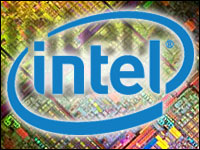
Intel is acquiring Infineon’s wireless business for US$1.4 billion — the second major transaction for the company in as many weeks, coming on the heels of its surprising announcement that it would purchase McAfee for $7.7 billion.
Unlike the McAfee deal, however, the Infineon buy does not have analysts scratching their heads.
A German-based maker of chips for Apple’s iPhone and other mobile devices, the Infineon wireless unit makes a great deal of sense as an acquisition for Intel, Nathan Brookwood, an analyst with Insight 64, told the E-Commerce Times.
It is expected to help Intel further develop its 3G, 4G, WiMax and WiFi offerings. Eventually, “Intel will be able to offer processors that have embedded on them the technology to communicate over 3G and 4G wireless networks using WiMax and LTE,” Brookwood said.
Intel plans to keep the unit as a standalone busisness. It expects the deal to close in the first quarter of 2011, pending regulatory approval.
New Direction
For the most part, Intel has been synonymous with PC chips. That line of business, though, is become less and less robust as the industry matures and mobile computing takes center stage with consumers.
Indeed, Intel just warned investors that slumping demand for PCs — as well as a general consumer slowdown in spending — will likely translate into third-quarter revenues that will be lower than earlier forecasts.
Huge Boost
The Infineon deal will give Intel a huge boost in the mobile space, Roger Kay, principal with Endpoint Technologies Associates, told the E-Commerce Times. “Chip characteristics for the mobile space include small, lightweight, and a long battery life. The Atom is just not there yet.”
It’s been said that the Infineon acquisition could give Intel a three-to-four year shortcut in R&D, Kay noted. “If that is true, it is worth $1.4 billion right there.”
Much of this effort won’t bear fruit for 12 to 18 months as solutions are built, scaled to these new markets, and designed into hardware, said Rob Enderle of the Enderle Group.
“But without Infineon, Intel would likely eventually become an insignificant player,” he told the E-Commerce Times.
Mixed Portfolio
The Infineon wireless unit’s products are largely ARM-based, which has raised some questions over Intel’s possible plans for its own Atom chip development, said Kay, as well as the wisdom — or lack thereof — of Intel jettisoning its Xscale mobile processor business line to Marvell in 2006. It sold the unit after failing to make inroads in the mobile market.
That was then, Kay argued. The markets have changed considerably in the interim.
Furthermore, Intel is acquiring far more than just ARM licenses with this acquisition, he pointed out. “There are a lot of different elements to this package, including radio capablities, which is the bulk of Infineon’s IP.”
Both the Atom and ARM fill certain roles and can be complementary in Intel’s bigger picture, Brookwood said.
“It can be hard to develop radio semiconductors for cellular communications, and Intel recognizes that that is where the indsutry is heading,” he explained. “If there is one constant in the semiconductor industry, it is that the chips are always increasing their capabilities and always looking for the next function to integrate onto those processors.”
Not Overpaying
It is also worth noting that Intel is not competing for this unit — unlike, say, the wrangling between Dell and HP over 3Par, Kay added.
“There has been a tendency for some tech M&As to overpay lately,” he observed. “In fact, I think 3Par is still a decent deal, but there are some very high valuations out there, and firms have to start looking over their bids more carefully if they want them to pay off.”
Infineon’s wireless unit earned about $1.17 billion in the last fiscal year — accounting for 30 percent of the company’s overall revenue.
























































Social Media
See all Social Media